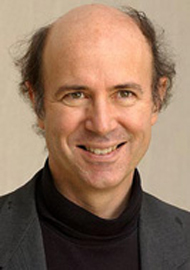Former Faculty: FRANK WILCZEK

Faculty, Particle Physics, School of Natural Sciences, September 1989–June 2000; Member, Particle Physics, School of Natural Sciences, September 1977–June 1978
- * PhD: Princeton University, 1974
- * Born: May 15, 1951 in Mineola, NY
Career Highlights:1
- * Wilczek is known, among other things, for the discovery of asymptotic freedom, the development of quantum chromodynamics, the invention of axions, and the discovery and exploitation of new forms of quantum statistics (anyons).
- * Wiczek was awarded the Nobel Prize in Physics in 2004, together with David J. Gross and H. David Politzer, for their work on the theory of "the strong force," the force that holds subatomic particles together inside the nucleus. They described an aspect of the theory, called "asymptotic freedom," that quarks, the constituents of the protons and neutrons within the nucleus, behave almost as free particles at very close distances. Professors Gross and Wilczek received the prize for work published in 1973 in Physical Review Letters, when Wilczek was a graduate student and Gross was a Professor at Princeton University (1969-97) and a Member in the Institute's School of Natural Sciences.
Awards/Prizes include:
- * American Physical Society's J.J. Sakurai Prize (1986)
- * Dirac Medal and Prize (1994)
- * Royal Netherlands Academy of Arts and Sciences' Lorentz Medal (2002)
- * American Physical Society's Lilienfeld Prize (2003)
- * Nobel Prize in Physics (2004)
- * King Faisal International Prize for Science (2005)
1excerpts from his Faculty web page at Massachusetts Institute of Technology and an article on page 2 of the Fall 2004 issue of the Institute Letter